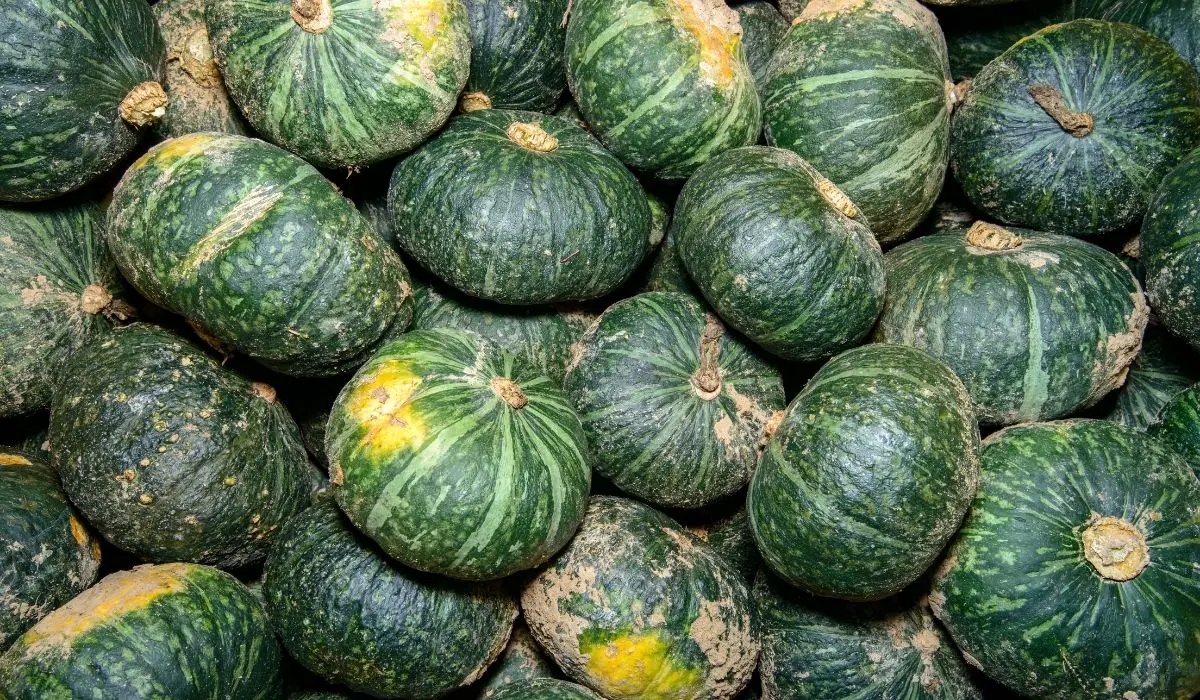Last fall, my brother-in-law, Josh, made the most amazing roasted kabocha squash for Thanksgiving. He cut it into wedges and cooked it with the skin still on. When it came out of the oven, the dense, bright orange flesh was smooth and creamy, with a sweet, nutty, and caramelized flavor. “What did you do to this?” I asked. “I just roasted it,” he said.
Also known as Japanese pumpkin, kabocha squash is a wonderfully versatile winter squash variety. In Japanese cooking, it’s often simmered in a flavorful dashi stock to make Kabocha no Nimono or fried and served as part of vegetable tempura. In Korea, it’s cooked into porridge and mashed into salad. Previously, I’ve blended it into pasta sauce and simmered it into soup.
But it wasn’t until I tried Josh’s Thanksgiving side dish that I really fell in love with roasted kabocha squash. It’s so simple to prepare, and it has such a rich flavor. Earlier this fall, I started topping it with sesame seeds, scallions, and my sesame ginger dressing to make a composed side dish, and I’m still obsessed with the combination. I hope you love it too!
The green outer skin may look deceptively hard, but it is edible. Can you cook/eat the skin on a Kabocha squash (aka Japanese pumpkin)? Yes, one can.

Kabocha Squash Recipe Tips
- Save the seeds! Like pumpkin seeds, kabocha squash seeds are entirely edible. When roasted, they’re a delicious, protein-rich appetizer or snack. After you remove the seeds from the squash, pull off any orange, stringy flesh, rinse and dry the seeds, and toss them with a bit of olive oil and sea salt. Roast at 300°F for 35-45 minutes, stirring halfway, until golden brown and crisp. Yum!
- Don’t skimp on the oil. When roasted, different kabocha squash can vary in texture. Some are super-soft and creamy, sort of like a baked sweet potato, while others are a bit more dry and chalky. To prevent these squash from becoming too dry in the oven, make sure to coat them generously with oil. I use about 2 tablespoons for one medium kabocha squash.
How to Roast Kabocha Squash
If you’re not a fan of chopping and peeling winter squash, I don’t blame you. It’s not my favorite thing to do either! I do have good news, though: there’s no need to peel kabocha squash, as the skin is entirely edible. If your squash is particularly nubbly, you may want to trim away any brown, dry spots, but feel free to leave on the orange or green skin.
I also have a trick to make the squash easier to cut. Instead of attempting to slice it raw, I pop the whole, unpeeled squash in the oven for 10 minutes. This pre-bake makes it so much easier (and safer!) to slice.
After you pre-bake the squash, use a sharp knife to slice it in half lengthwise and scoop out the seeds.
Then, cut the seeded halves into 1 1/2-inch wedges.
Spread them in an even layer on a parchment-lined baking sheet and toss with generous drizzles of olive oil, salt, and pepper.
Transfer to a 425°F oven and roast the squash until it’s tender and golden brown, flipping halfway. That’s it!
3 Easy Kabocha Recipes in Seven Minutes
FAQ
Can you eat green kabocha squash?
What does green kabocha squash taste like?
What color should kabocha squash be?
How do you know if kabocha squash is rotten?
Can you eat kabocha squash?
Before you cut kabocha squash, rinse it under cold, running water. Clean it to remove any dirt or debris and dry it. Kabocha pumpkin skin is thin and can be eaten. If you want to peel a kabocha squash, you can use a vegetable peeler. You can pierce the rind in different places with a knife and microwave the squash for a few minutes.
Is kombucha bad for you?
As the drink is carbonated, excessive intake can cause bloating and gas. Additionally, kombucha contains compounds called FODMAPs, specific types of carbohydrates that can cause digestive upset in many people, particularly those suffering from irritable bowel syndrome. If taken in controlled amounts and by people without IBS it is very healthy.
Can you eat kabocha pumpkins?
You can eat kabocha pumpkins by cutting them in half or into slices, cubes, or dice. You can mash them. You can use kabocha squash as a substitute in butternut squash or acorn squash recipes. You can prepare them in salads, side dishes, mains, or desserts.
Can kabocha squash be frozen?
Freezing (Optional): If you have a surplus of kabocha squash, you can also freeze it. To freeze kabocha squash, peel and cut it into cubes or slices, blanch for a couple of minutes, drain, cool, and then place in airtight freezer-safe containers or bags. Properly frozen kabocha squash can be stored for several months.
